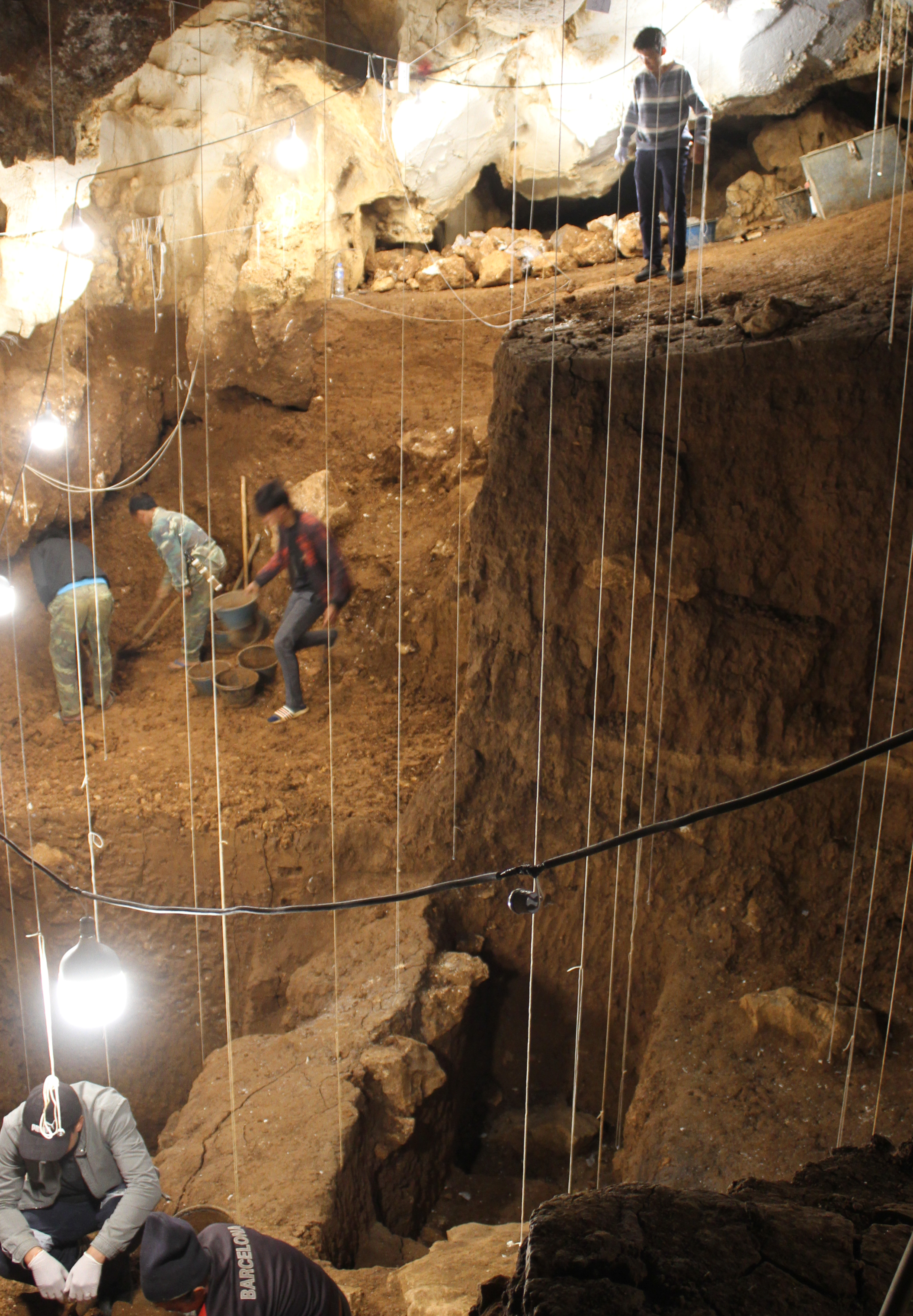Human fossils found in Tam Pà Ling cave in northern Laos have been dated as 68-86,000 years old. The fossils’ finders are confident these came from Homo sapiens, rather than a near relative like Denisovans, making these the oldest reliable evidence of humans in East Asia and answering some big questions about humanity’s great migration out of Africa. However, it seems that these early adventurers have no surviving descendants, suggesting this was probably an expansion that ultimately failed.
The 2009 discovery of a human skull and jawbone in Tam Pà Ling revealed the site’s potential importance. The skull was unquestionably Homo sapiens, showing modern humans had been in the area a long time ago, although its age was initially uncertain. That was intriguing because the first migrators out of Africa were thought to have hugged the coast, while Tam Pà Ling is 300 kilometers (180 miles) inland and 1,000 meters (3,300 feet) above sea level.
Since then progressively older finds have been made in deeper layers at Tam Pà Ling. A new paper not only reveals a tibia (shinbone) from the deepest layer, but uses multiple techniques to reveal the cave’s timeline.
“Tam Pà Ling plays a key role in the story of modern human migration through Asia but its significance and value is only just being recognized,” said Dr Fabrice Demeter of the University of Copenhagen in a statement.
Tam Pà Ling is a curious site, Dr Kira Westaway of Macquarie University told IFLScience. “No one would have lived in this cave, but anything on the landscape around could get channeled in.” That’s included more human bones than most sites yield, but no tools and surprisingly few animal remains. “We’ve searched the surrounding area for hearths or other signs of occupation,” Westaway added, but so far without reward.
There’s a reason humans didn’t live in Tam Pa Ling, instead having their remains washed in
Image Credit: Kira Westaway (Macquarie University)
Some paleoanthropologists dismissed Tam Pà Ling’s value, arguing everything had washed into it in a single major flood, making sedimentary layers useless for dating finds. The fossils themselves are considered too precious by Lao authorities to be carbon-dated.
However, Westaway and co-authors have demonstrated that instead, Tam Pà Ling has a slow steady build-up of sedimentary layers. By dating each layer, the team can know the age of the fossils within them. The discovery of animal bones, on which dating is allowed, has confirmed some layers, while a stalactite tip aged another, but the primary approach has been luminescence dating, which shows how long materials have been shielded from radiation underground.
Claims have been made for much older teeth from China, but both their age and whether they belonged to Homo sapiens have been disputed.
“Finally we have enough dating evidence to confidently say when Homo sapiens first arrived in this area, how long they were there and what route they may have taken.” Westaway said.
All of this means we know that humans were in Laos 77,000 years ago, plus or minus 9,000 years, and stayed a very long time. The people who lived there were part of our species, but slightly built by modern standards, fitting a pattern of forest dwellers. The area around Tam Pà Ling is believed to have been heavily forested through all that time.
It’s likely these people were related to the inhabitants of Sumatra around 68,000 years ago, and, more speculatively, those who made tools in Australia around the same time. However, genetic studies of Indigenous Australians and South-East Asians find them separating from African people more recently, around the same time Europeans and Native Americans did.
“It looks like there was an earlier migration that was unsuccessful,” Westaway told IFLScience. If there were any of these pioneers still in the area when a later migration arrived, they were so few in number they contributed less than 1 percent to the ancestry of those living there today.
Why these first arrivers died out, or at least failed to thrive, despite establishing outposts across such a vast range, is a mystery the new discovery only deepens.
Intriguingly, Tam Pà Ling is close to Tam Ngu Hao Cave, occupied by Denisovans around 70,000 years earlier, suggesting there was something about the area that attracted humans.
The study is published open access in the journal Nature Communications
Source Link: Cave Contains Earliest Clear Evidence Of Modern Humans In South East Asia
